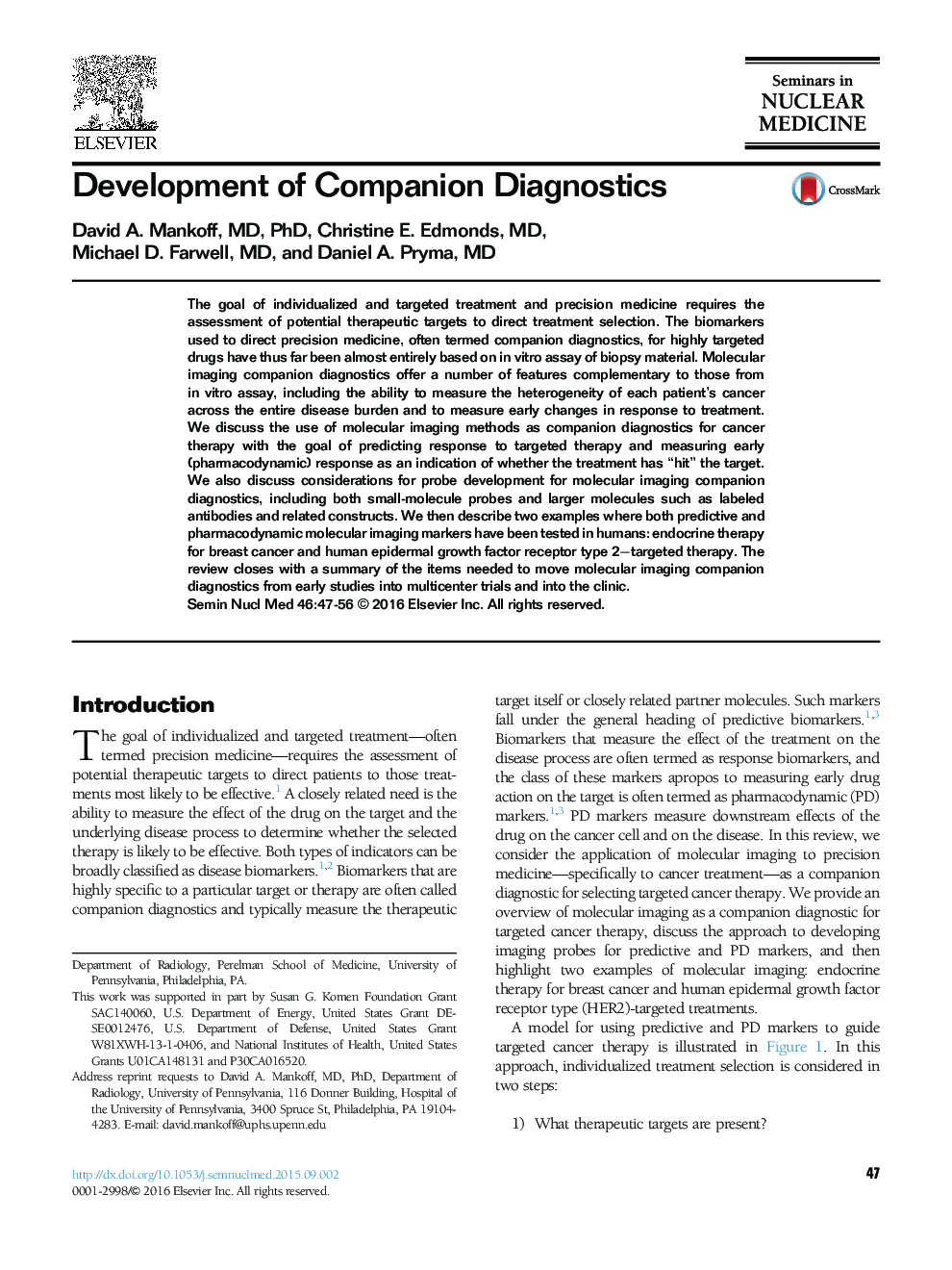| Article ID | Journal | Published Year | Pages | File Type |
|---|---|---|---|---|
| 4250844 | Seminars in Nuclear Medicine | 2016 | 10 Pages |
The goal of individualized and targeted treatment and precision medicine requires the assessment of potential therapeutic targets to direct treatment selection. The biomarkers used to direct precision medicine, often termed companion diagnostics, for highly targeted drugs have thus far been almost entirely based on in vitro assay of biopsy material. Molecular imaging companion diagnostics offer a number of features complementary to those from in vitro assay, including the ability to measure the heterogeneity of each patient’s cancer across the entire disease burden and to measure early changes in response to treatment. We discuss the use of molecular imaging methods as companion diagnostics for cancer therapy with the goal of predicting response to targeted therapy and measuring early (pharmacodynamic) response as an indication of whether the treatment has “hit” the target. We also discuss considerations for probe development for molecular imaging companion diagnostics, including both small-molecule probes and larger molecules such as labeled antibodies and related constructs. We then describe two examples where both predictive and pharmacodynamic molecular imaging markers have been tested in humans: endocrine therapy for breast cancer and human epidermal growth factor receptor type 2−targeted therapy. The review closes with a summary of the items needed to move molecular imaging companion diagnostics from early studies into multicenter trials and into the clinic.
